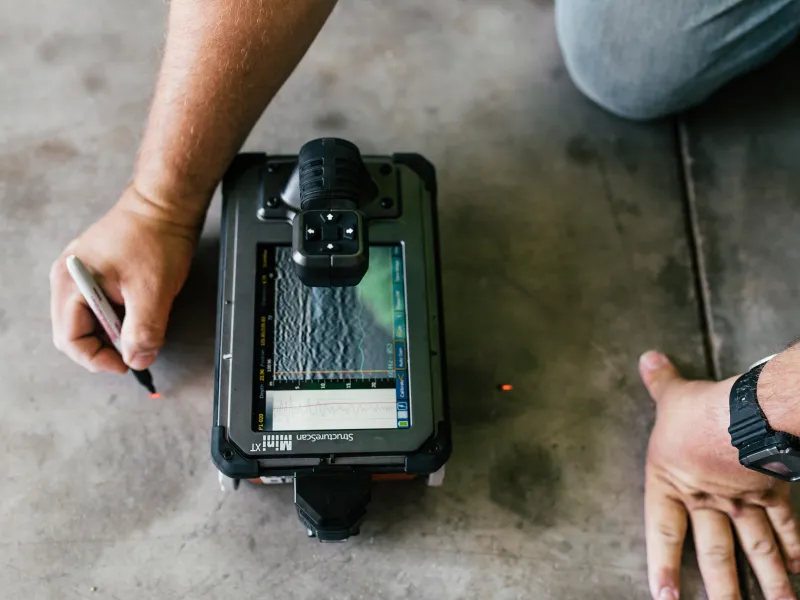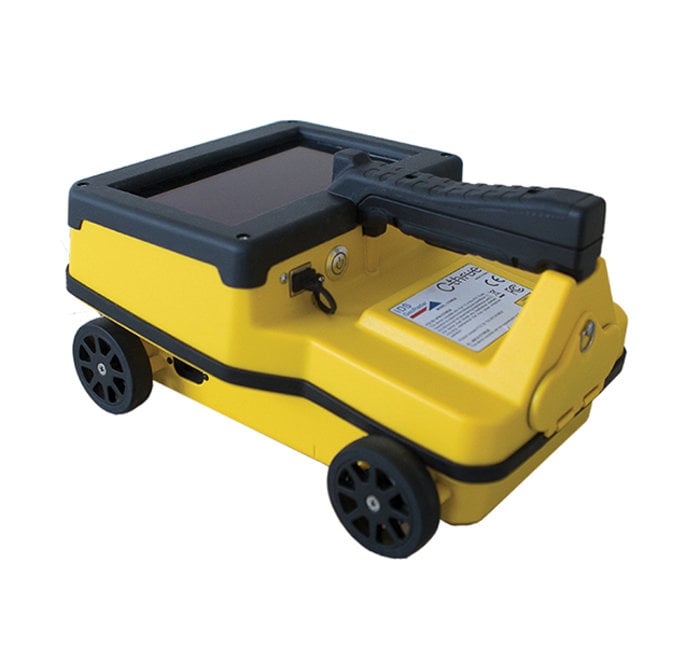The Relevance of Accurate Concrete Scanning in Finding Underground Hazards
The capability to accurately find and map these below ground hazards is not simply a matter of benefit but a vital element of ensuring the safety and security of both construction workers and the integrity of the job itself. By deploying advanced scanning technologies and approaches, experts can reveal hidden threats, stop expensive problems, and inevitably lead the method for smoother and safer building and construction ventures.
Advanced Scanning Technologies for Detection
Sophisticated radar systems are transforming the area of below ground discovery by giving exceptional accuracy and efficiency. These sophisticated scanning innovations use ground-penetrating radar (GPR) to create comprehensive pictures of subsurface structures, supplying insights right into what lies beneath the surface area with exceptional clearness. By giving off high-frequency pulses right into the ground and measuring the reflections, radar systems can identify variations in material structure and detect below ground dangers such as spaces, pipelines, and wires.
One of the essential advantages of these sophisticated radar systems is their non-invasive nature, permitting thorough examinations without triggering damages to the existing frameworks. This not only guarantees the safety of the surrounding setting however likewise lessens the demand for expensive repair services or disturbances to ongoing building jobs. Furthermore, the real-time information supplied by these scanning modern technologies allows fast decision-making and improves overall job effectiveness.
Relevance of Subsurface Mapping

Exact subsurface mapping assists in stopping costly problems to existing underground infrastructure, decreasing the risk of accidents, and maintaining task timelines. It enables task supervisors to make educated decisions regarding site planning, tools implementation, and resource allowance. Furthermore, subsurface mapping enables better coordination amongst different teams working with a task and assists in complying with regulative needs associated with underground utility discovery.
Mitigating Risks in Building Tasks
Efficient danger reduction approaches are important for making certain the success and safety and security of construction jobs. One key element of mitigating threats in building and construction projects is extensive preparation and analysis at the initial phases.
In addition, developing clear interaction channels among all task stakeholders and making certain strict adherence to safety methods are essential components of danger reduction. Regular assessments, high quality control measures, and tracking of job development can aid in recognizing and resolving any type of arising risks immediately. Moreover, having backup plans in position for unexpected difficulties can substantially lower the influence of disruptions on the task. By proactively applying durable threat reduction techniques, construction tasks can reduce delays, expense overruns, and safety and security occurrences, inevitably leading to effective job results.

Avoiding Pricey Problems and Hold-ups
To reduce economic losses and job setbacks, reliable techniques need to be implemented to stop expensive problems and delays in construction projects. Recognizing these blockages early on assists in preparing the job format much more efficiently and staying clear of possible problems during excavation.
Furthermore, purchasing training programs for building workers on the significance of concrete scanning and risk-free excavation methods can dramatically reduce the risk of accidents and delays. Clear interaction networks in between task managers, engineers, and on-site employees are also necessary to make certain that everybody is aware of the prospective hazards and follows the essential protocols to stop costly damages. By prioritizing click here now proactive procedures like concrete scanning and advertising a society of safety and understanding, building tasks can lessen the economic impact of unexpected below ground obstructions and avoid costly delays.
Ensuring Safety And Security of On-Site Worker
By focusing on positive procedures such as detailed training programs and clear communication channels, building jobs can make certain the safety of on-site personnel amid the prospective dangers spotted through concrete scanning. Proper training furnishes workers with the knowledge and abilities needed to navigate building and construction websites securely, specifically when dangers are determined through scanning processes. Training ought to cover risk acknowledgment, emergency procedures, and the proper usage of personal safety equipment to alleviate risks properly.
Furthermore, developing clear interaction networks is critical for distributing information concerning identified threats immediately. This guarantees that all on-site employees recognize possible risks and can take essential preventative measures to stay clear of mishaps. Routine safety and security rundowns, tool kit talks, and consistent updates pertaining to scanning results help keep everybody informed and aggressive in keeping a risk-free functioning environment.
Furthermore, carrying out strict adherence to safety protocols and guidelines, performing normal safety and security audits, and promoting a society of safety consciousness among workers are crucial parts in making sure the health of on-site personnel throughout building and construction tasks - RainierGPR Concrete Scanning. Positive safety steps not only shield workers from damage however also add to the general success and effectiveness of the task
Final Thought
To conclude, specific concrete scanning plays an essential role in identifying below ground threats. Making use of sophisticated scanning innovations and subsurface mapping aids alleviate risks in building jobs, preventing pricey problems and delays. By ensuring the safety and security of on-site personnel, exact scanning can dramatically boost the performance and success of building you could try this out procedures. It is critical for construction business to focus on using precise scanning techniques to minimize possible threats and ensure a smooth building and construction procedure.

By proactively applying durable risk reduction approaches, building projects can lessen hold-ups, expense overruns, and security occurrences, eventually leading to successful task results. - RainierGPR Concrete Scanning
To reduce monetary losses and task troubles, efficient approaches need to be implemented to protect against expensive damages and hold-ups in construction projects. By prioritizing positive measures like concrete look at more info scanning and promoting a society of security and recognition, building tasks can decrease the monetary effect of unforeseen below ground obstructions and prevent expensive delays.
By focusing on aggressive procedures such as comprehensive training programs and clear interaction networks, construction tasks can make sure the safety and security of on-site employees in the middle of the possible risks identified via concrete scanning. Making use of sophisticated scanning technologies and subsurface mapping helps mitigate threats in building and construction jobs, avoiding expensive damages and hold-ups.